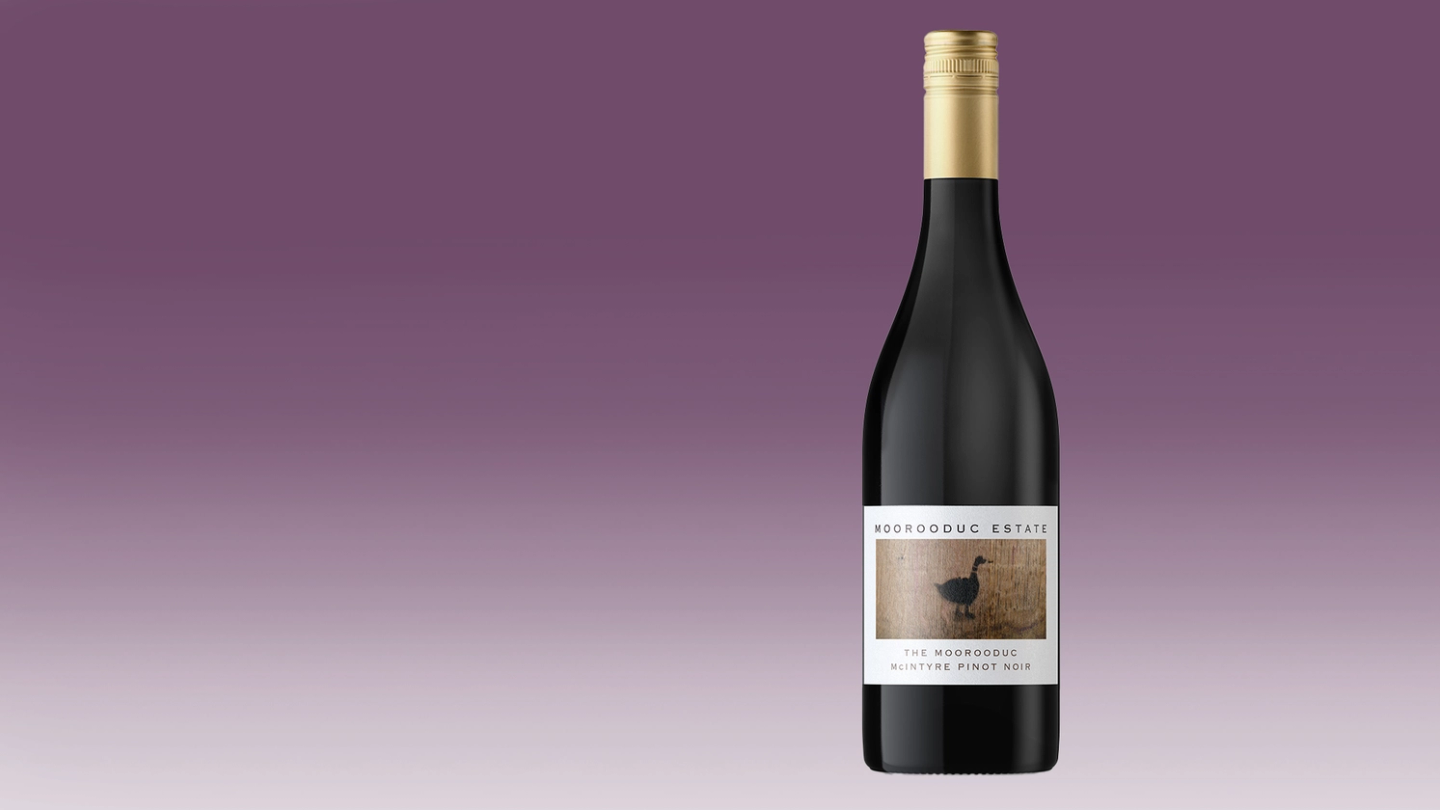

Wine of the Week: The Moorooduc McIntyre Pinot Noir 2020
Sold to younger customers who are less influenced by tradition, this bottle prizes elegance and precision over power and structure
Words: Guy Woodward
To many, Australia’s red wines are big, bold and burly. That’s certainly what Richard McIntyre thought when, 40 years ago, he swapped his Oxford medical practice for a vineyard in the country’s bucolic Mornington Peninsula. Amid the raft of questions he faced, the one that took him the least time to answer was which grape variety to plant. He chose that most ubiquitous and reliable of varieties: the cabernet sauvignon.
Alongside shiraz, cabernet’s fruity, rounded charms were proving popular down under, with wines from the Barossa Valley and Margaret River already established and chiming with Australia’s sunshine-in-a-bottle image. Mornington Peninsula, however, was still emerging as a wine region, meaning McIntyre had less historical data and know-how to draw upon (a contemporary of his fermented his first vintage in a fish tank). Planting a grape variety that worked elsewhere seemed a safe bet. Sadly, it was a mistake.
With its coastal air and more southerly outlook, Mornington Peninsula doesn’t get the necessary heat to fully ripen the cabernets of this world. It didn’t take McIntyre long to realise this, and, a few years later, he ripped up his vines and replaced them with the delicate, elegant and lighter-toned pinot noir. As the decades have passed, it has proved a wise decision.
In recent years, the world has begun to tire of the big, oaky, alcoholic reds from hot spots that have been the mainstay of Australia’s wine canon. In 2022, the value of Australian wine exports dipped four per cent in value, with shipments to the UK dropping 18 per cent. One style, though, bucked the trend. Exports of Australian pinot noir were up six per cent in both value and volume, with the UK the top importer.
Pinot remains a niche style – Tasmania, which is responsible for the highest share of Australia’s pinot output by value, produces just one per cent of all Australian wine. But, the variety’s artisanal, premium, food-friendly signature is a strong draw (despite claiming a mere five per cent of the country’s overall plantings, pinot holds a 18.5 per cent share of listings on Australian restaurant wine lists). And, today, Mornington Peninsula represents arguably the Australian apogee of the variety, heralded in wine circles for being a ‘cool climate’ and home to a number of family-owned boutique estates, of which McIntyre’s Moorooduc is now a leading light.
Moorooduc produces both pinot and chardonnay in a contemporary style that prizes elegance and precision over power and structure. Over the years, it has progressed from making merely estate wines, blended from a variety of sources, to single-vineyard wines from individual sites. Chief among them is the McIntyre Vineyard – named after the family – with Richard since joined at the winery by his terroir-obsessed daughter, Kate, one of the world’s 414 masters of wine (MW).
The McIntyre pinot, from Moorooduc’s most northerly, high-altitude, exposed site, is packed full of cranberry and herbal tones, somehow marrying intensity with a lightness of touch. Bright, crunchy fruits combine with substance and weight and a refreshing bead of acidity that complements food and hints at a longer life ahead. Mark Brooksby, of importer Vindependents, bought the entire UK allocation for distribution among local, independent merchants who deal in quality over quantity. They sell it, he says, to “younger customers who are less influenced by tradition” and “are very happy to pay £40 for an Aussie pinot if it tastes as good as a £60 Chambolle-Musigny”.
All pinot noir from outside Burgundy is inevitably compared to that of its spiritual home. But, the Moorooduc wines represent a different rendering: more fruit-forward, packed with tension and verve. They are also more competitively priced. Peter McCombie, also a master of wine, says he “would rather drink decent Aussie pinot than cheap red Burgundy, which is often pretty filthy”. Fellow MW Anne Kriebel, who attended the Pinot Noir Celebration, in Mornington, earlier this year – a bold showcase of ambition and intent, hosted by the region’s winemakers – hailed the standard of pinot she encountered there as “absolutely outstanding”.
Sadly, old habits die hard. “From the consumer tastings I host, many people still associate Australia with big, alcoholic wines,” says Peter Mitchell, MW and director of upscale London wine merchant Jeroboams. They shouldn’t. As Richard Hemming, MW and head of wine (Asia) at wine-themed members’ club 67 Pall Mall, says: “At its best, Australian pinot comfortably competes with the best of California, Oregon, New Zealand and elsewhere.” And, Moorooduc’s McIntyre pinot, he adds, “is reflective of the Mornington Peninsula at its very best”.
Want more drinks content? Here’s how to make the perfect martini…
Become a Gentleman’s Journal member. Find out more here.


